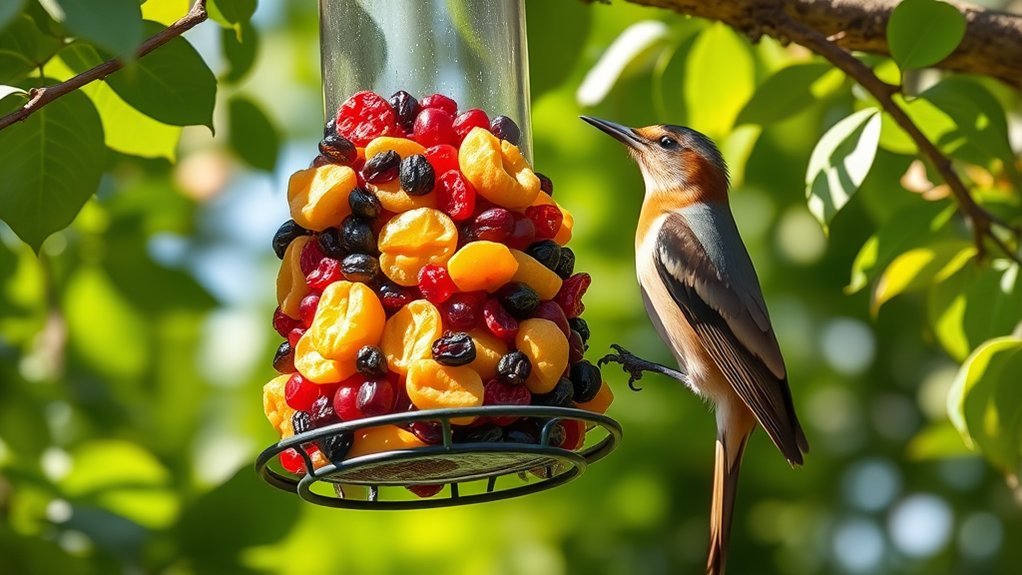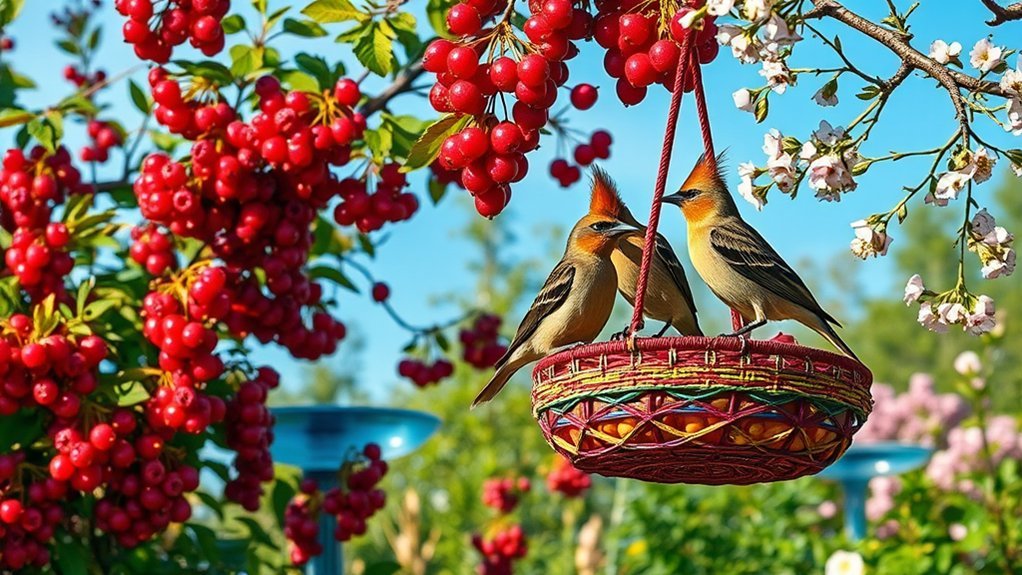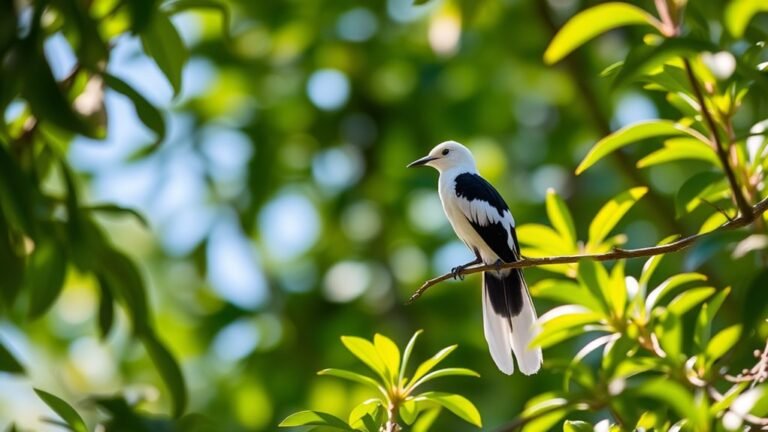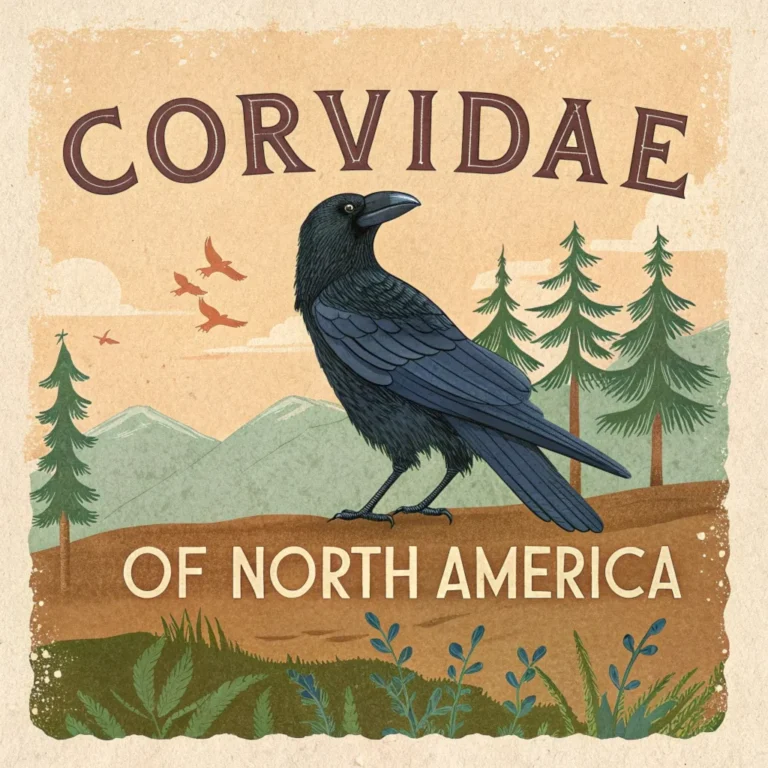10 Ways to Attract Cedar Waxwings to Your Garden
To attract Cedar Waxwings to your garden, focus on their food and habitat needs. These birds prefer areas with plenty of native plants, especially those that produce fruit. Here are some effective ways to make your garden more inviting for these beautiful birds:
- Plant Native Fruit-Bearing Trees and Shrubs: Use trees like mulberry, serviceberry, or wild cherry, and shrubs such as elderberry and dogwood.
- Add Berry Bushes: Include raspberry and blackberry bushes, as these are favorites for Cedar Waxwings in late summer.
- Create a Water Source: Provide a birdbath or shallow dish of water for drinking and bathing.
- Avoid Pesticides: Minimize or eliminate chemical use in your garden to protect insects and plants, which are part of their diet.
- Offer Supplementary Food: Consider adding bird feeders with fruits like sliced apples or grapes, especially in winter.
- Maintain a Natural Environment: Leave some areas wild with native plants to support the insects Cedar Waxwings eat.
- Create Nesting Opportunities: Provide materials for nesting, such as twigs and dried leaves, in a safe area of your garden.
- Use Vertical Layers: Plant a mix of heights in your garden, including tall trees, mid-height shrubs, and low ground covers.
- Keep Your Garden Clean: Regularly clear fallen fruit or debris to promote health in your garden and attract birds.
- Be Patient: Give Cedar Waxwings time to discover your garden. It may take a while for them to find and frequent your space.
By implementing these tips, your garden can become a welcoming spot for Cedar Waxwings to thrive. Enjoy watching these charming birds as they visit your yard.
Key Takeaways
- Plant native berry shrubs like serviceberry and elderberry. These provide food for Cedar Waxwings throughout the year.
- Add colorful fruit trees to your garden. Choose both early and late varieties to ensure a steady fruit supply in sunny spots.
- Set up clean, shallow bird baths. Change the water regularly to attract Cedar Waxwings for drinking and bathing.
- Use bird feeders filled with dried fruits. You can also create fruit skewers to make food easy for the birds to access.
- Design your garden with a mix of vegetation. Include native plants for shelter, nesting, and food sources.
By following these simple steps, you can create a welcoming environment for these charming birds to thrive in your garden.
Plant Native Berry-Producing Shrubs

To attract Cedar Waxwings to your garden, plant native berry-producing shrubs. Choose local species that bear plenty of berries throughout the year. Good options include serviceberry, elderberry, and black chokeberry. These plants supply essential food for Cedar Waxwings.
Planting native shrubs helps create a welcoming environment for these birds and supports your garden's overall health.
Select plants that produce berries at different times. This ensures a steady food supply and boosts your garden's biodiversity.
Incorporate Fruit Trees in Your Garden
Planting fruit trees in your garden enhances its attraction to Cedar Waxwings. Choose trees that produce colorful and abundant fruits, such as serviceberries, mulberries, or cherries.
These trees provide food for the birds and improve your garden's appearance. Mix early- and late-fruiting varieties to ensure a steady supply of fruit throughout the growing season.
Place the trees in sunny areas to draw in more birds. By adding these trees, you create a lively environment for Cedar Waxwings, making your garden vibrant and enjoyable.
Provide Fresh Water Sources

To attract Cedar Waxwings to your garden, create a clean water source.
These birds enjoy drinking and bathing in shallow water. Install bird baths that are about 2 inches deep.
Regularly change the water to keep it fresh since Cedar Waxwings are sensitive to dirty water.
Place the bird baths in partially shaded areas to keep the water cool.
Create Dense, Multilayered Vegetation
To attract Cedar Waxwings, add dense, multilayered vegetation to your garden. This creates varied canopies that provide shelter and nesting spots.
Use different tree heights and types of shrubs to boost habitat diversity. Native plants like serviceberry and dogwood will attract these birds with their fruit.
Additionally, thicker underbrush offers safety from predators. A wide range of plants will make your garden more inviting to Cedar Waxwings and other wildlife.
Set up a Bird Feeder With Dried Fruit

Setting up a bird feeder with dried fruit can attract Cedar Waxwings to your garden.
These birds love sweet foods. Follow these simple steps to create an inviting feeder:
- Select a strong feeder designed to hold different types of dried fruits.
- Use a mix of dried fruits like apricots, raisins, figs, and dates.
- Use fruit skewers to display the dried fruits. This makes it easy for the Waxwings to eat.
- Place the feeder in a sunny spot, close to trees or shrubs for a safe and inviting space.
These steps will help you attract Cedar Waxwings and enjoy their delightful presence in your garden.
Use Native Plants for Nesting Habitats
Using native plants in your garden can enhance its beauty and provide crucial nesting habitats for Cedar Waxwings.
These birds need local plants for nesting materials like twigs, grasses, and leaves. By planting native shrubs and trees, you offer a safe space that protects them from predators and harsh weather. Good options include dogwood and elderberry, which attract the insects Cedar Waxwings feed on and provide berries they enjoy.
Native plants also fit well within local ecosystems, helping your garden feel natural.
Avoid Pesticides for a Natural Ecosystem
To create a habitat for Cedar Waxwings, avoid pesticides and chemicals. This helps establish a safe environment for these birds.
Using organic gardening methods promotes biodiversity and attracts beneficial insects that control pests naturally.
Here are some simple strategies to keep your garden pesticide-free:
- Attract Beneficial Insects: Bring in ladybugs and lacewings to help manage pest populations.
- Practice Companion Planting: Grow plants that keep harmful insects away alongside those that attract Cedar Waxwings.
- Build Healthy Soil: Use compost to enrich soil and support plant health.
- Provide Natural Habitats: Plant native species to offer shelter and food sources.
Hang Suet or Fruit Cages
To attract Cedar Waxwings to your garden, hang suet or fruit cages. This provides a reliable food source for these birds.
Place the cages in a sheltered area to protect them from strong winds and direct sunlight. This keeps the food fresh.
Use appealing fruits like elderberries and raspberries, as Cedar Waxwings enjoy these. Offering a variety of fruits can help attract more birds.
Regularly refill your cages to keep them interested. By creating an inviting feeding spot, you can enjoy watching Cedar Waxwings visit your garden.
Offer Shelter With Evergreen Trees
Providing shelter with evergreen trees can significantly improve your garden's appeal to Cedar Waxwings. These birds enjoy the safety of dense evergreen foliage while they forage.
Here are the key benefits of using evergreens for shelter:
- Protection from Predators: Evergreens offer a safe space for waxwings, helping them avoid threats.
- Nesting Sites: These trees provide excellent locations for nesting, which is important for attracting these beautiful birds.
- Year-Round Shelter: Evergreen trees maintain their foliage throughout the year, making your garden inviting in every season.
- Stable Environment: The trees help moderate temperature changes, creating a welcoming habitat for various wildlife, including Cedar Waxwings.
Adding evergreens is essential for a bird-friendly garden. Enjoy the beauty and vibrancy these birds bring!
Create a Bird-Friendly Landscape Design
A bird-friendly landscape design supports Cedar Waxwings and other birds.
Start by planting native plants that provide food, such as serviceberries and viburnums.
Include flowers that bloom in different seasons. These plants attract insects, which feed the young birds.
Use a variety of plant heights and structures. This layering offers cover for the birds and easy access to fruit.
Water features are also important. Birds need to drink and bathe.
By creating a colorful landscape with these elements, you build a habitat that welcomes Cedar Waxwings.
Your garden will be more beautiful and support local wildlife.
Enjoy the lively presence of birds in your space!
Frequently Asked Questions
What Time of Year Are Cedar Waxwings Most Active?
Cedar waxwings are most active in late spring and early summer during their breeding season. This is when they search for berries and display their bright feathers. You can observe their social behavior and feeding habits during this lively time.
Do Cedar Waxwings Migrate, and Where Do They Go?
Yes, cedar waxwings migrate based on seasonal changes. They usually go south during colder months to find warmer areas. These regions provide more food and better chances for breeding.
How Do I Recognize Cedar Waxwing Calls?
You can recognize Cedar Waxwing calls by their soft and high-pitched whistles. They also make trills. These sounds help them communicate with each other. Listen carefully to appreciate these unique calls in your area!
What Colors Are Cedar Waxwings and How Can I Identify Them?
Cedar waxwings have soft, muted colors. Their bellies are buttery yellow, and their wings are gray. They also have a subtle brownish cap. To identify them, look for their distinctive black mask and bright yellow tips on their tails. These features make cedar waxwings easy to recognize. Enjoy watching these beautiful birds in your area!
Are Cedar Waxwings Social With Other Bird Species?
Cedar waxwings are social birds that often form large flocks. They mainly interact with their own species. However, they are generally tolerant of other bird species, especially during foraging. At times, you can see them in mixed flocks, showing their willingness to coexist with others. This behavior makes them interesting to observe in various habitats.

Kashvi is a passionate bird enthusiast and nature lover who has been fascinated by the world of birds for years. With a keen eye for detail and a love for learning, Kashvi is dedicated to sharing her knowledge and insights with fellow bird enthusiasts on Avian Enthusiasts. Through her engaging and informative articles, Kashvi aims to inspire others to join her in exploring the fascinating world of birds and to promote a deeper appreciation for these incredible creatures.







